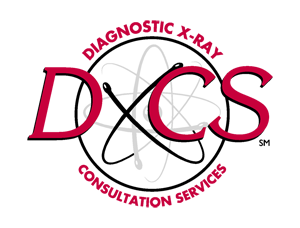Every Halloween, there are news accounts of adulterated food items turning up in children’s trick-or-treat bags. Historically, it has been common practice for some Neighborhood Associations, church groups, and school organizations to sponsor Halloween parties as a safe alternative to door-to-door trick-or-treating. As far back at the 1970’s, for the same reason, it has been routine for some community hospitals, chiropractic offices, medical groups, and public health clinics to offer the free x-raying of Halloween candy. Competition in the healthcare marketplace has caused some facilities to offer this service despite the doubts some of their staff members have regarding its overall effectiveness. The subject of x-raying Halloween treats is not well-researched and not a great deal of public health statistics regarding its use appear in the scientific literature. Some anecdotal evidence however, suggests the practice of x-raying Halloween is misleading, costly, and leads to increased risk for children.

Should Halloween Candy by X-rayed? A Public Health Perspective
What X-rays Can't Catch
X-ray is not sensitive to the presence of toxins, prescription medicines, street drugs, or certain radiolucent foreign bodies. Only metallic foreign objects such as pins, needles, paper clips, razor blades, etc. have the potential to be visualized with any regularity on x-ray. Screening candy utilizing x-ray does not ensure that the food items are safe to consume and creates a false sense of security. Calvanese (1988) reports in the American Journal of Roentgenology that of the 394 screening x-rays taken in three local hospitals, and 669 images taken in another 18 adjacent clinics, no films were positive for hidden metallic foreign bodies. Even in the hands of trained physicians, plain film x-ray is not a reliable method of locating foreign bodies that have been already swallowed and known to be located in the gastrointestinal tract. Erbil et al. (2013) found that known swallowed foreign bodies could be detected in only 46% of patients presenting to a hospital emergency room.
Is the Expense Worth it?
The radiographic screening of candy is expensive for hospitals and medical outpatient services to offer as a service. Calvanese, also in 1988, reported the cost to x-ray each bag of candy ranged from $2.01 to $5.23 (average, $3.38). As has everything medical this cost has increased over time. Given there are 5,534 U.S. registered hospitals, over 60,000 chiropractic, podiatric and outpatient clinics and 13,500 imaging centers capable of rendering this service, the nation could be spending millions of dollars annually just x-raying Halloween candy. Further, children taking their candy to community hospitals on Halloween night might result in traffic accidents. Police routinely expect an increased number of DUI arrests in most urban regions on October the 31st. Finally, large numbers of children crowding into an imaging department on Halloween night to have candy x-rayed can disrupt patient flow and vital emergency department functions.
How to Check Your Candy
Parental inspection of Halloween candy is the best guarantee of food safety. Follow these rules to help ensure a safe celebration:
(1) Have parents examine candy wrappers carefully.
(2) Throw away any candy with wrappers that have tears, puncture marks or show signs of discoloration, fading, being unwrapped or with expiration dates.
(3) Discard unwrapped candy and any candy from an unknown source or manufacturer;
(4) Discard homemade treats from unknown sources, for example, cookies, popcorn, or cupcakes.
(5) Inspect any fruit for punctures and discard any from unknown sources; remember fruit can be contaminated with a toxin without visible evidence of tampering.
(6) Limit the size of your children’s trick-or-treating area, particularly in unfamiliar neighborhoods, and encourage parties given by friends or local organizations as a safe alternative.
X-ray Consultation Services
In Phoenix, diagnostic imaging services and x-ray second opinion services are provided by diagnostic x-ray consultation services. Diagnostic capabilities include interpretations of MRI, CT, plain film and digital motion x-rays, and musculoskeletal diagnostic ultrasound.
Dr. Gary Longmuir has over 30 years as a practicing physician with a specialty in radiology and chiropractic, with a Masters of Applied Science in musculoskeletal disease management, a postdoctoral dealership in magnetic resonance imaging, and a Ph.D. in public health epidemiology. Professional references are available upon request.
Protect your reputation and your practice, get backup, and request that second opinion.
References
References:
Calvanese, J. (1986). Should we x-ray Halloween candy? Revisited. Vet Hum Toxicol. April, 30(2): 165-169.
Erbil, B., Ali Karaca, M., Aslaner, M., Ibrahimov, Z., Kunt, M., … Ozmen, M. (2013). Emergency admissions due to swallowed foreign bodies in adults. World J. Gastroenterol. 19(38), 6447-6452.
Fig. 1
Teaching image of Halloween candy containing multiple metallic foreign bodies (pins). X-ray image courtesy of Rio Grande Valley Mobile X-ray Lab.
